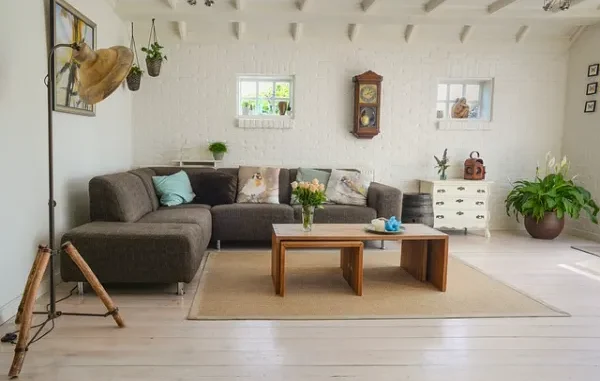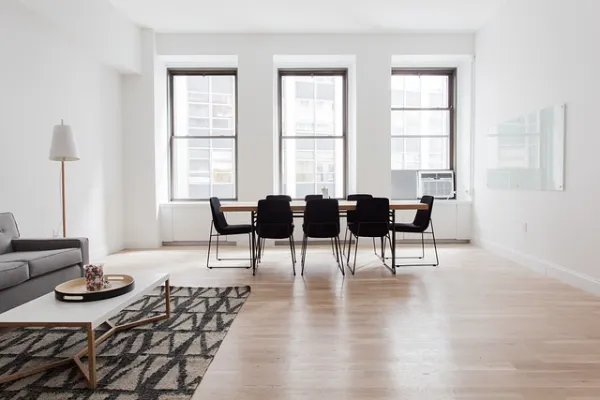
In today’s ever-evolving world, the concept of “home” has taken on new significance. No longer simply a space to reside, homes have transformed into multifunctional environments that accommodate work, leisure, and everything in between. The rise of remote working, the shift towards eco-conscious living, and the quest for personalization have all driven a new approach to interior design. More than just an aesthetic pursuit, modern interior design seeks to create spaces that are functional, flexible, and reflective of individual lifestyles and values. This fresh perspective on interior design challenges traditional norms, offering a more dynamic and holistic understanding of what it means to create a home.
The Evolution of Interior Design
Historically, interior design was driven largely by social status and functionality. Wealthier households would showcase grandeur, with rooms that adhered to rigid formality and distinct purposes, while modest homes focused on practicality. However, in the 21st century, this binary approach has dissolved. Design has become democratized, with a growing emphasis on personal expression, sustainability, and technology. No longer reserved for the elite, interior design is now accessible to the masses, thanks to the proliferation of affordable design tools, the availability of online inspiration, and the increasing recognition of the importance of well-designed spaces for well-being.
The modern-day home reflects the complexity of contemporary life. A kitchen is no longer just for cooking, but also for gathering, working, or even relaxing. Similarly, living rooms have evolved from purely social spaces to hybrid environments that may include a home office or fitness area. This blending of functions demands a rethinking of traditional design principles.
Personalization: The Key to Meaningful Spaces

One of the most significant shifts in interior design is the move towards personalization. Gone are the days of cookie-cutter layouts and mass-produced furniture that fills homes with no sense of individuality. Today, interior design places a premium on creating spaces that tell a story — one that reflects the personalities, values, and preferences of the inhabitants.
Personalization in design manifests in various ways. It can be as simple as choosing colors that evoke certain emotions, or as complex as incorporating custom-made furniture or art that has personal significance. This trend has also led to the popularity of DIY design projects, allowing homeowners to have a direct hand in shaping their environment.
A personalized space is more than just visually appealing; it fosters a sense of ownership and belonging. This is especially important in an era where many people spend significant time at home. Interior design, therefore, serves as a tool for self-expression, transforming homes into spaces where people feel truly comfortable and connected.
Sustainability: Designing for the Future
In the context of growing environmental concerns, sustainable interior design has emerged as a key trend. Today’s designers are increasingly conscious of the ecological impact of their choices, from the materials they use to the lifespan of the products they recommend. Sustainability in interior design goes beyond aesthetics; it is about creating spaces that are both beautiful and eco-friendly.
Sustainable design practices often include the use of recycled or repurposed materials, energy-efficient lighting, and non-toxic paints and finishes. Additionally, there is a growing trend towards designing spaces that can easily adapt to future needs. For example, modular furniture and flexible layouts ensure that a home can evolve with its inhabitants, reducing the need for constant renovation or replacement of furniture.
The integration of nature into interior design, known as biophilic design, is another aspect of sustainability. This approach involves bringing elements of the outdoors inside, such as plants, natural light, and organic materials. Not only does this foster a connection with nature, but it also has tangible benefits for mental and physical well-being. Studies have shown that incorporating natural elements into interior spaces can reduce stress, improve mood, and even boost productivity.
The Role of Technology in Interior Design
As with many other industries, technology has revolutionized interior design. The advent of smart home systems, 3D rendering tools, and virtual reality has opened new possibilities for both designers and homeowners. These innovations allow for more precise planning, seamless execution, and enhanced functionality within spaces.
Smart home technology, for instance, allows for the integration of automated lighting, climate control, and security systems that can be customized to suit the needs of the homeowner. Beyond practicality, smart home devices contribute to a more sustainable lifestyle by optimizing energy usage and reducing waste.
Moreover, the use of digital design tools has made it easier than ever to visualize interior spaces before making any physical changes. This brings us to an increasingly popular tool in interior design: the floor plan creator.
Floor Plan Creators: Redefining Space Planning
One of the most transformative tools in modern interior design is the floor plan creator. These digital applications allow homeowners and designers to map out the layout of a room or entire home, offering a visual representation of how furniture, lighting, and décor will fit into the space. With floor plan creators, users can experiment with different layouts, visualize color schemes, and assess spatial relationships before committing to any decisions.
Floor plan creators range from simple, user-friendly apps to advanced programs used by professional designers. For the average homeowner, these tools provide a hands-on way to engage with the design process. Users can input the exact dimensions of their space, drag and drop furniture, and even simulate how natural light will interact with the layout at different times of the day.
These tools are particularly useful in open-concept spaces, where defining different zones can be a challenge. By creating a virtual floor plan, users can experiment with the placement of furniture and room dividers to ensure a harmonious flow between areas dedicated to different activities. Additionally, floor plan creators often include a 3D mode, which allows users to “walk through” their design and experience the space from various perspectives.
For professional designers, floor plan creators streamline the planning process and facilitate communication with clients. They can quickly generate different versions of a design, incorporating feedback and making adjustments in real-time. This collaborative approach not only speeds up the design process but also ensures that the final result aligns closely with the client’s vision.
Overall, floor plan creators represent a significant leap forward in interior design, empowering both professionals and amateurs to explore endless possibilities and refine their ideas before bringing them to life.
Flexibility in Design: A Response to Changing Lifestyles
In addition to personalization and sustainability, flexibility has become a cornerstone of modern interior design. As lifestyles become more fluid, the ability to adapt spaces to different needs is increasingly important. This flexibility can be achieved through multipurpose furniture, modular design, and versatile layouts.
For example, a dining room might double as a home office during the day, or a guest bedroom may also function as a workout space. Flexibility in design is not just about practicality; it also ensures that a home remains relevant and functional over time. As family dynamics, work habits, and personal interests evolve, the home must be able to accommodate these changes without the need for constant renovation.
The rise of remote working has also influenced this trend. Many people now require dedicated workspaces within their homes, but few have the luxury of sacrificing an entire room for an office. This has led to creative solutions, such as the use of fold-away desks, hidden storage, and soundproofing elements that can transform a living area into a productive work environment and back again at the end of the day.
Conclusion
The reimagining of home through interior design is a reflection of broader societal changes. As the boundaries between work, leisure, and family life continue to blur, the need for personalized, flexible, and sustainable spaces has never been greater. The evolution of interior design — supported by technology, driven by personal expression, and guided by ecological considerations — offers new opportunities to create homes that are as functional as they are beautiful.
Whether it’s through the use of floor plan creators, smart technology, or eco-friendly materials, the future of interior design lies in its ability to adapt to the changing needs and desires of those who inhabit these spaces. By embracing these innovations, interior design is not just shaping homes, but also shaping the way people live, work, and connect within them.






Leave a Reply